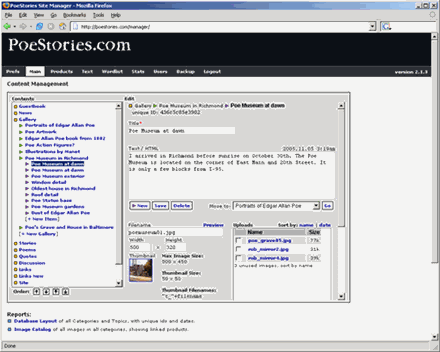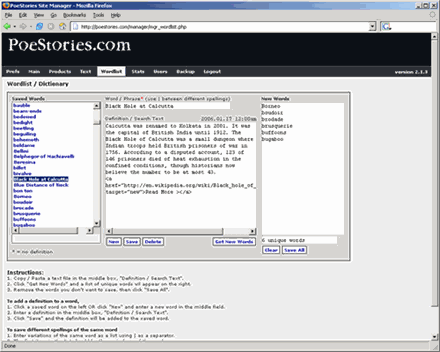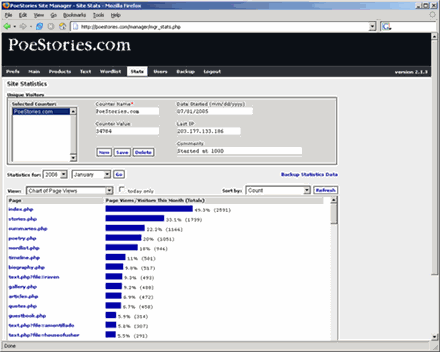A Content Management System (CMS) allows the operators of a web site to add, edit, or delete
content on the site. A good CMS is easy to use and does not require any programming or
design skills. Basic knowledge of a computer is necessary but a CMS should be no more
difficult to use than a word processor.
Many sites have information or images that need to be updated at least once a week. Having
to call your web designer each week to request updates would be expensive and annoying to
the designer. A CMS solves this problem. Once the site itself is built, the owner of the site
can log in from any computer connected to the internet and update text and images as often as
they want.
There are many types of Content Management Systems on the market. At Design215, we built our
own CMS, custom tailored to our clients' needs. Our system works best with the sites
we design but the Design215 Site Manager will work with any existing site as long as PHP and
MySQL are supported.
Features Overview:

Here is the Main tab of the Site Manager for PoeStories.com. The layout on the
left shows how the content of the site is organized. The Gallery folder is open
and inside it, one of the photo galleries is open. Inside the open photo gallery
is a list of the images in that gallery. Each image has a title and a description.

This is a custom tab that was designed specifically for PoeStories.com. On the left is
a list of vocabulary words. Words are entered along with a definition. Any time one of
these words appears in any story or poem on the site, it becomes a link. When the link
is clicked, the definition pops up next to the word.

This view in the Statistics tab is showing a chart of pages viewed during January 2006, sorted by
popularity. The administrator can easily determine which pages are the most popular,
and how many people have been to each page.